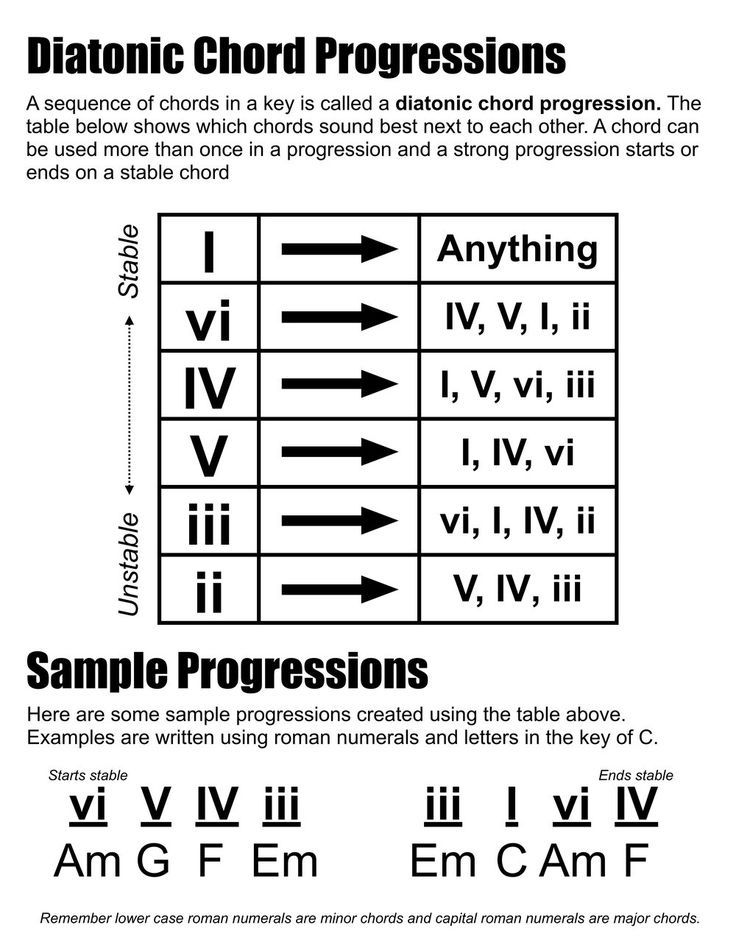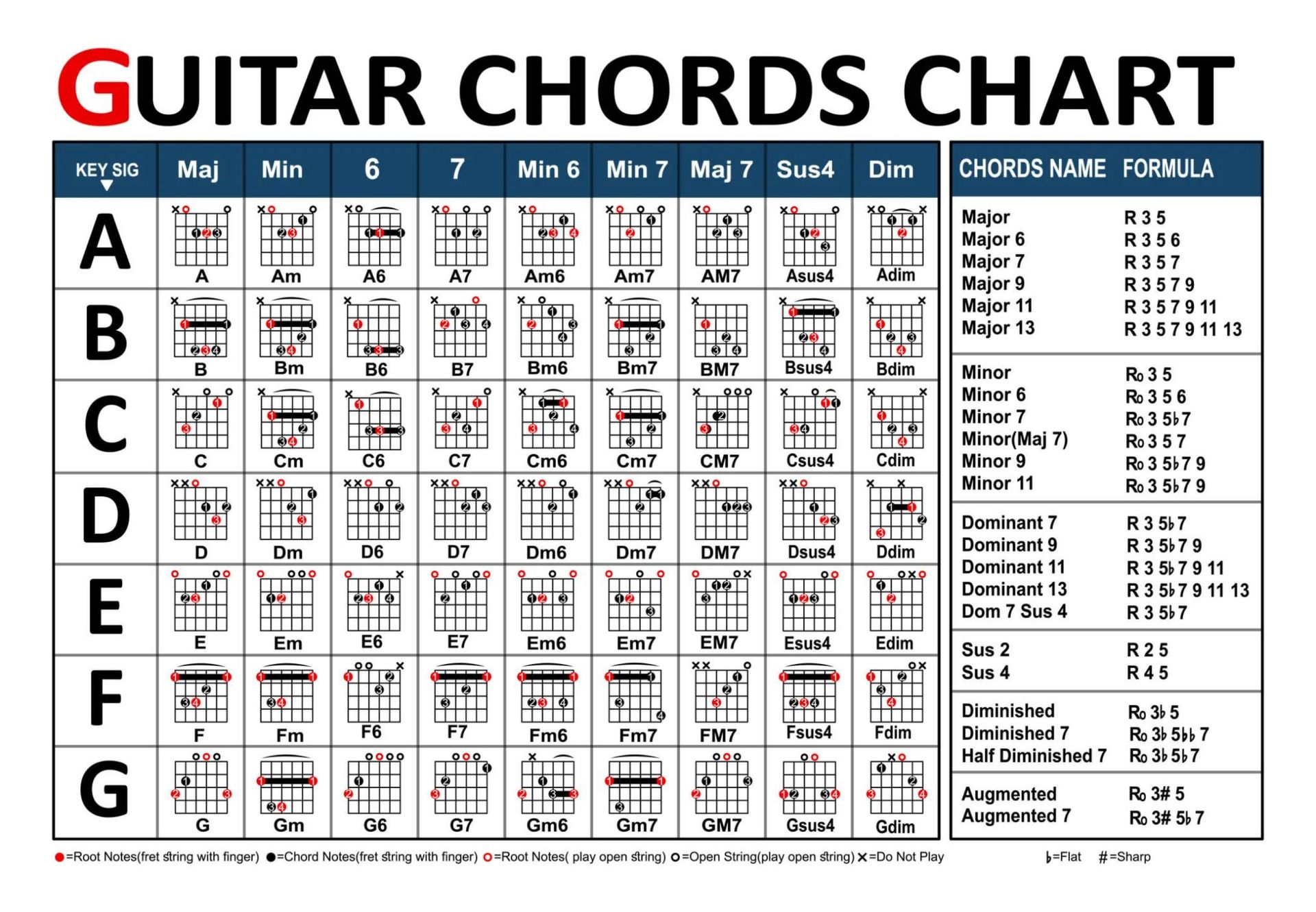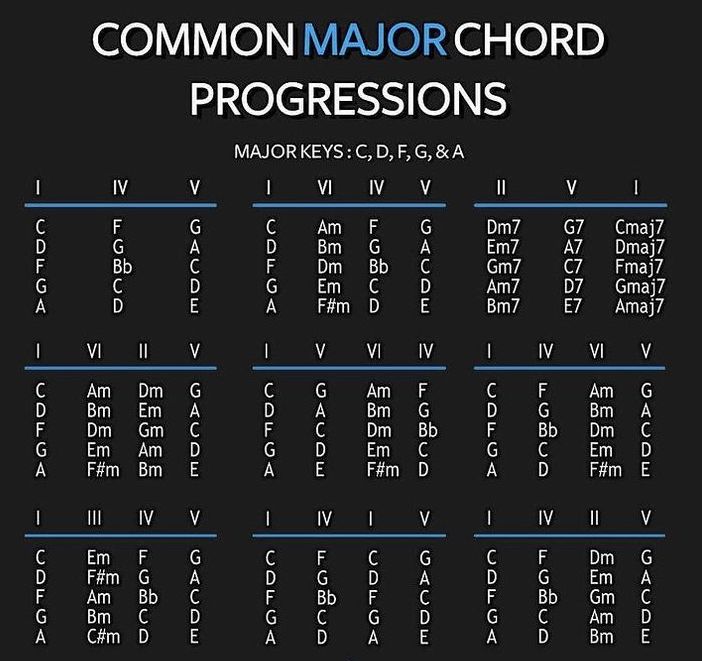Chord progressions serve as the backbone of music, laying the groundwork for melodies and harmonies to flourish. For budding songwriters, mastering the art of crafting compelling chord progressions is key to crafting music that resonates with audiences. In this post, we will delve into the intricacies of creating captivating chord progressions, offering insights and techniques to enhance your songwriting skills.

Decoding Chord Progressions: Before we embark on the journey of crafting chord progressions, it's important to grasp their essence. A chord progression is a sequence of chords played sequentially, shaping the harmonic structure of a musical piece. Each chord in a progression plays a vital role in setting the mood and atmosphere of the song, creating a dynamic interplay of tension and release as the music unfolds.
Types of Chord Progressions: There are countless chord progressions used in music, ranging from simple to complex. Some of the most common types include:
- Diatonic Progressions: These progressions are built using the chords derived from a particular key. They often follow the natural harmony of the key, providing a sense of stability and resolution.
- Circle Progressions: Circle progressions move through chords in a circular fashion, often returning to the starting chord. This type of progression creates a sense of motion and continuity in the music.
- Modal Progressions: Modal progressions are based on the modes of the major scale, such as Ionian, Dorian, and Mixolydian. Each mode has its own unique sound and character, allowing for a wide range of harmonic possibilities.

First up,When creating a chord progression, it's important to remember that the chords work well together when they belong to the same key.
Each key is made up of a specific set of notes, known as a scale. By using the notes from a particular scale, you can build chords that naturally complement each other. For example, if you're working in the key of C major, you would use chords derived from the C major scale.
Here are the notes in the C major scale:
| C | D | E | F | G | A | B |
And these are the 7 basic chords you can form using only the notes from this scale::
| C | D | E | F | G | A | B |
| E | F | G | A | B | C | D |
| G | A | B | C | D | E | F |
| C major | D minor | E minor | F major | G major | A minor | B diminished |
Those are the chords in my available “chord alphabet” that I have in C major. I can make any progression I want with these 7 chords.
This pattern of 3 major/3 minor/1 diminished chord is the same no matter which of the twelve major keys you use.
Here’s a trick that musicians use to tell which chords to play next, no matter what key you’re in:
Instead of writing out chords, they’ll use Roman numerals. Uppercase for major chords and lowercase for minor chords. A superscript circle is added for the diminished chord.
| I | ii | iii | IV | V | vi | vii° |
Because every major key follows the same structure, using Roman numerals instead of chord names means you can write a chord progression and put it in any key you want.
And those chords will always sound the same!
And here’s what they look like all together:
| I | ii. | iii. | IV | V | vi | vii° |
| Major | Minor | Minor | Major | Major | Minor | Diminished |
| C | Dm | Em | F | G | Am | B° |
| D♭ | E♭m | Fm | G♭ | A♭ | B♭m | C° |
| D | Em | F♯m | G | A | Bm | C♯° |
| E♭ | Fm | Gm | A♭ | B♭ | Cm | D♭° |
| E | F♯m | G♯m | A | B | C♯m | D♯° |
| F | Gm | Am | B♭ | C | Dm | E♭° |
| G♭ | A♭m | B♭m | C♭ | D♭ | E♭m | F° |
| G | Am | Bm | C | D | Em | F♯° |
| A♭ | B♭m | Cm | D♭ | E♭ | Fm | G° |
| A | Bm | C♯m | D | E | F♯m | G♯° |
| B♭ | Cm | Dm | E♭ | F | Gm | A° |
| B | C♯m | D♯m | E | F♯ | G♯m | A♯° |
See how as your key (I) goes up by one note, the rest of the chords go up by a single note too?

Now, there’s a different pattern for all the twelve minor keys too.
And here’s what happens with the minor keys. The same number of minor/major/diminished chords are used but in a different mix.
So for C major’s relative minor, A minor, we get this pattern of chords to use in our song:
| A minor | B diminished. | C major. | D minor. | E minor. | F major. | G major |
You could also write it like this:
| i | ii° | III | iv | v | VI | VII |
Just like the major keys, you can apply this pattern to whatever minor key you are in.
How Do I Make My Own Chord Progression?
Exploring the chord progressions of songs you love can be a great learning experience.
Instead of just transcribing them and adding your own melody, consider starting from the ground up.

Step1: Pick an Instrument
Pick any instrument Keyboard or guitar, acoustic or electric, analog or digital
Step 2: Pick a Key
Determines the 1st chord (I or i) you’ll use and return to. For example, I may pick the key of C Major.
Step 3: Pick any of the Major or Minor Scale
Feel free to experiment with adding a unexpected chord at any point if it enhances the sound. These guidelines are just a starting point.
Major Key
| I | ii | iii | IV | V | vi | vii° |
Minor Key
| i | ii° | III | iv | v | VI | VII |
Step 4: Pick the Second Chord
Starting with I or i, you have the option to select any different chord from the cheat sheet you have chosen. These are generally more popular or well-known choices.
Use the Table of Usual Root Progressions for inspiration.
Step 5: Pick a Feel
Either trending Song or any song which connects you !!
Step 6: Add Another Chord
Explore the various options provided in the Table of Usual Root Progressions. Experiment with different combinations.
Which ones resonate with you? What stands out to you? Is there something completely new you'd like to attempt?
Step 7: Create a Rough Demo
Make sure to experiment with different tempos and rhythms to see how they affect the overall feel of your song.
Consider adding in some unexpected chord changes or substitutions to keep the listener engaged and interested.
Don't be afraid to break the rules and try something unconventional - that's often where the most interesting and unique music comes from.
As you work on your song, remember to stay true to your own artistic vision and trust your instincts.
Step 8: Try Spicing It Up With Out-Of-Key Chords
O\You can also change keys. The circle of fifths will help you find a great key to change to.
Step 9: Try Simplifying With Fewer Chords
It's important to note that chord progressions can greatly impact the emotional tone of a song.
Sometimes simplicity in chord choices can lead to a more powerful and memorable song.
Remember, the progression of chords should enhance the overall direction of the music.
Don't Forget to Subscribe and comment about this blog !!
"Master the Chords Progression: Secrets of Songwriting"